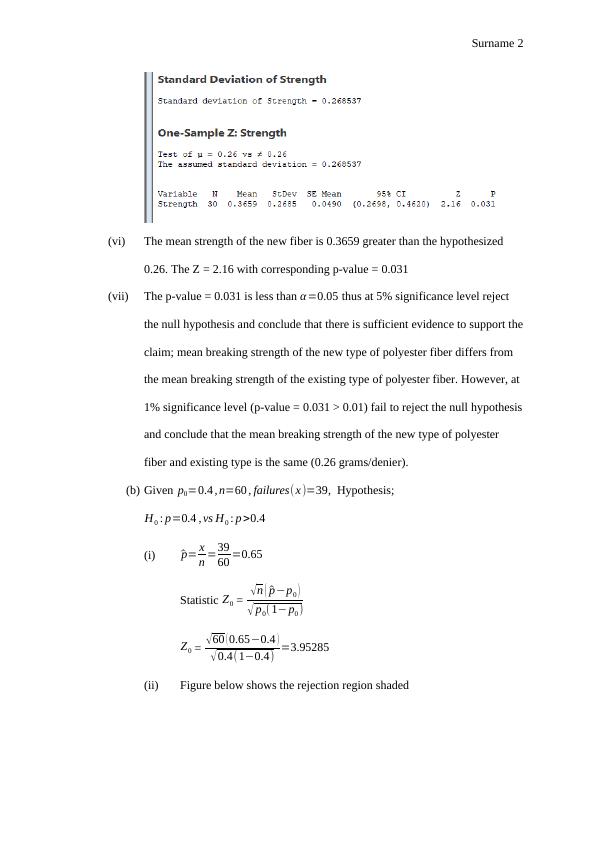TMA 05: Hypothesis Testing and Distribution Analysis
M248 TMA 05 covers Units 9 and 10 in the course Analysing data. It is a TMA assignment marked out of 50, with Question 1 covering topics in Unit 9 and Question 2 covering topics in Unit 10.
5 Pages839 Words152 Views
Added on 2023-04-19
About This Document
This document discusses hypothesis testing and distribution analysis in statistics. It covers topics such as null and alternative hypotheses, sample size determination, normality assumption, probability distributions, p-values, rejection regions, and significance levels. The document also includes examples and output for different types of tests, including z-tests, chi-square tests, and Mann-Whitney tests.
TMA 05: Hypothesis Testing and Distribution Analysis
M248 TMA 05 covers Units 9 and 10 in the course Analysing data. It is a TMA assignment marked out of 50, with Question 1 covering topics in Unit 9 and Question 2 covering topics in Unit 10.
Added on 2023-04-19
ShareRelated Documents
End of preview
Want to access all the pages? Upload your documents or become a member.
Quantitative Methods for Accounting & Finance
|8
|1656
|306
Solutions to Assignment
|9
|1717
|78
Biostatistics Assignment Solutions and Examples
|7
|855
|268
Data Analysis in Business
|8
|1074
|47
QAB 105 Assignment On Quantitative Analysis for Business
|8
|630
|81


